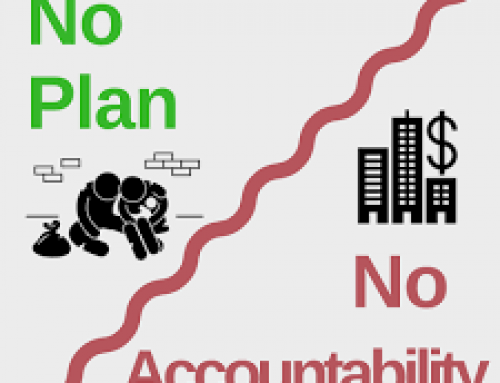The DEA is the biggest thief in the US (after the IRS), and is notorious for extending its surveillance capabilities to other agencies.
April 15, 2019
By: Bobby Casey, Managing Director GWP

All along, we’ve been pointing out the government’s critical examination of cash transactions, and the countless people who have been wrongfully caught up in the dragnet of asset forfeiture.
The mere fact that cash transactions greater than $10,000 — and sometimes as low as $5,000 — has drawn the unwanted attention of government authorities, and left countless individuals helplessly broke, is disturbing.
That the DEA is the biggest thief in the United States is also reason for concern.
The US Drug Enforcement Administration drummed up more seizures in the name of the drug war, and this time it’s with people who bought cash counters.
Their clandestine surveillance program brought in a shocking haul between 2008 and 2014:
“$48 million in cash, $4 million in real estate, 88 vehicles, and 179 firearms, as well as nearly 1,500 pounds of cocaine and over 21,300 pounds of marijuana.”
Of the tens of thousands of records collected, there were only 131 arrests, and the DEA refuses to report the number of convictions that resulted from all that. Over $50 million in forfeitures, and no idea how many convictions?
The DEA conducted a mass collection of information about individuals and business who bought money counters. They gathered this data by using “administrative subpoenas”. These subpoenas were not connected to any existing investigation, no names, no judge’s signature, and no basis other than a money counter was bought and sold.
The data they collected was so vague their own field offices couldn’t handle the ambiguous but abundant volume of data being passed to them. There was no rhyme or reason for why one lead would be pursued and another would not.
Worse still, the DEA was secretive even within government ranks, with regard to where they got their leads and information from. In fact, they went through great lengths to cover up their sources.
The FBI has withdrawn its support of the DEA’s fishing expeditions. That coupled with the Edward Snowden revelations back in 2013, brought the bulk data collection programs to a halt. This includes the sweeping phone metadata collections.
While they were chastised, they were never told stop. Also, nothing prevents the DEA from starting up another program. There was no legal or judicial oversight. No legal analysis provided. The DEA had this to say on the matter:
“[W]when asked for a legal review over the subpoena program, one manager in the DEA’s Office of Chief Counsel responded, ‘Unless a federal court tells us we can’t do this, I think we can continue this project.’”
Excuse me? While the programs are over for now, the extent of their programs were not known, and are the result of an audit conducted by the U.S. Department of Justice Office of Inspector General.
Since all this ended in 2013, can we assume that DEA surveillance is put to bed for now?
“As part of its ongoing remit to search out and stop illegal drug traffickers, the US Drug Enforcement Administration (DEA) has placed hidden cameras in everything from streetlights to traffic barrels to vacuum cleaners to road signs. Next up, the agency will be using an unspecified number of specially fitted toolboxes to conduct surveillance.“
As if Google spying on us wasn’t enough… now this?! Toolboxes?
“… allocated $71,685 to Total Machine LLC of King George, Virginia for a contract running through Feb. 28. The work is described in federal filings as: ‘Tool Box System Portable surveillance platform in tool box concealment black in color.’”
Ostensibly this will be used in their drug investigations. The problem is, their surveillance often has no existing investigation to tie it to. Who knows what these mechanisms will be used for?
How about those signs along the side of the road that tell you how fast you’re going? Isn’t that the city holding you accountable for your speed? Not necessarily.
The DEA also has license plate readers installed in those machines to scan your plates as you drive by.
“DEA’s National License Plate Reader Program (NLPRP) is a federation of independent federal, state, local, and tribal law enforcement license plate readers linked into a cooperative system, designed to enhance the ability of law enforcement agencies to interdict drug traffickers, money launderers or other criminal activities on high drug and money trafficking corridors and other public roadways throughout the U.S.”
This smacks of other law enforcement and government entities leasing the DEA’s surveillance capabilities, and for what?
How effective is it?
“The DEA does not release how much of the data it collects is connected to crimes. The nonprofit American Civil Liberties Union of Maryland found that only 47 out of every 1 million plates scanned by police in the state, or 0.005%, were linked to a serious crime. The Atlanta PD captured data from 128.5 million license plates last year; 786,580 of those—0.6%—were suspected of having a connection to a crime. Of 22 million license plates recorded in Austin, Texas during that same period, 3,200 of them—0.01%—were linked to alleged criminal activity.”
For many Americans, today is tax day. This is US tax dollars at work. At some point it becomes undeniable that people are paying for their own oppression. Much like all the other security theater we see in the TSA and the NSA, they are ineffectual in giving the people any measurable safety or benefits.
The cynic in me wonders if the DEA is struggling to remain relevant. Or if we are going to keep the drug war around as the catch-all excuse for why there needs to be cameras everywhere.
Click here to schedule a consultation or here to become a member of our Insider program where you are eligible for free consultations, deep discounts on corporate and trust services, plus a wealth of information on internationalizing your business, wealth and life.




